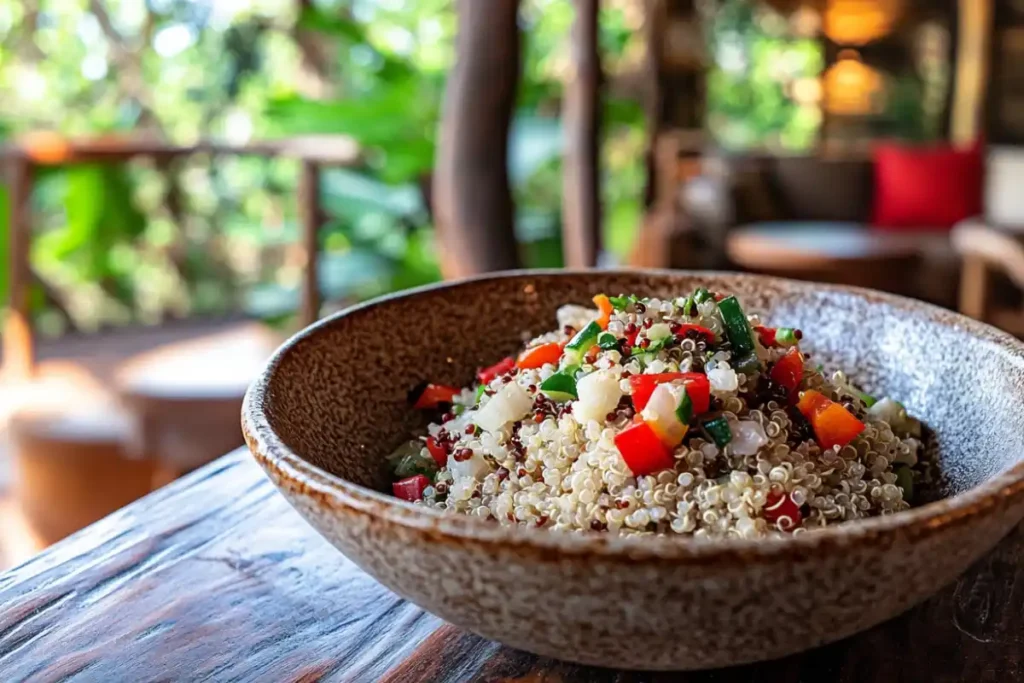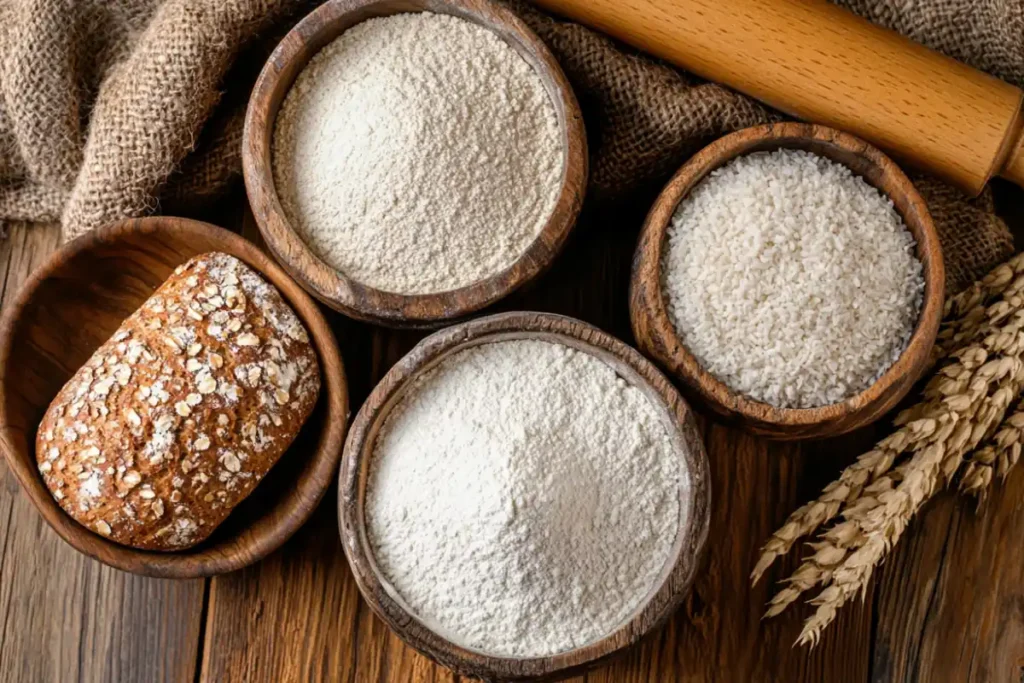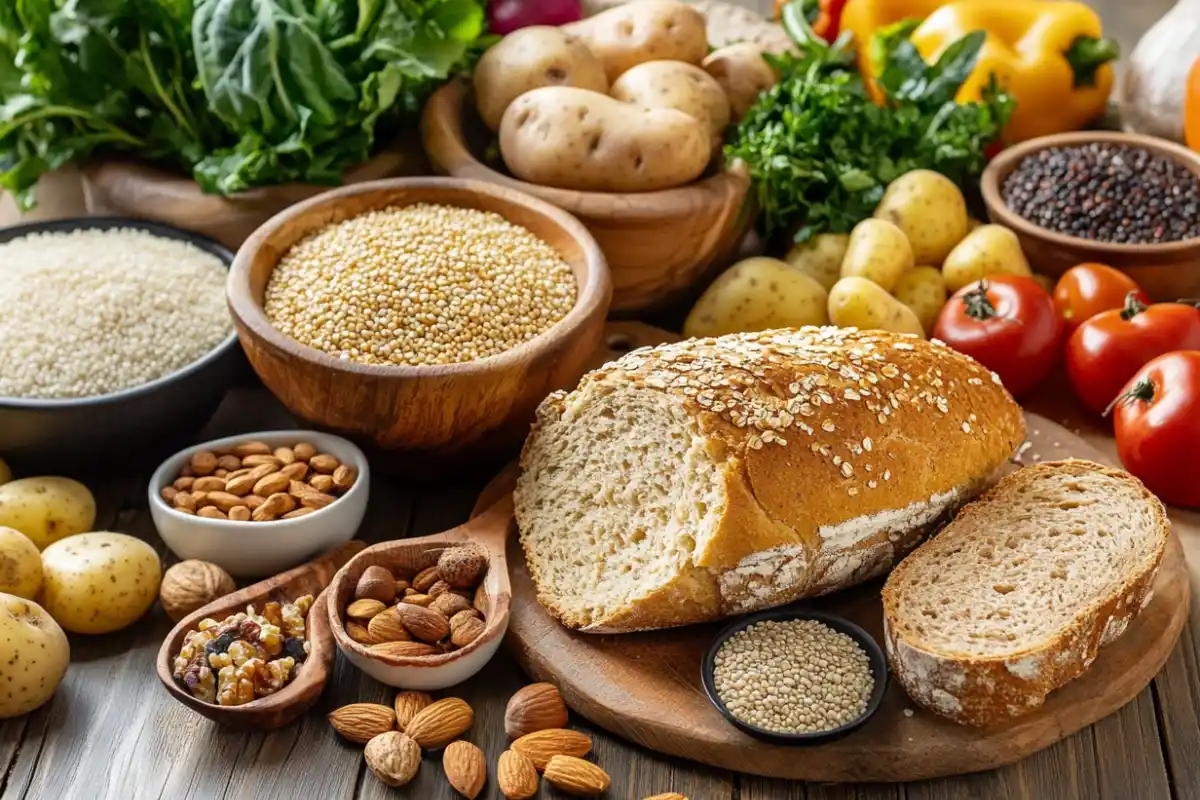Gluten-free diets have become incredibly popular in recent years, not just for those with celiac disease or gluten intolerance, but also for people seeking a healthier lifestyle. Whether you’re avoiding gluten due to medical reasons or simply looking for nutritious alternatives, you might be wondering: What is the most popular gluten-free food?
In this article, we’ll explore the top gluten-free foods that millions of people love. From naturally gluten-free staples like rice and quinoa to modern gluten-free alternatives like bread, pasta, and snacks, we’ll uncover the best options available. We’ll also discuss how to identify gluten-free foods, their health benefits, and how to enjoy them in your daily meals.
Let’s start by understanding what gluten is and why some people choose to avoid it.
Understanding Gluten and Gluten-Free Diets
What is Gluten?
Gluten is a type of protein found in wheat, barley, and rye. It gives bread its chewy texture and helps baked goods rise. However, for people with celiac disease or gluten sensitivity, consuming gluten can cause digestive issues, inflammation, and other health problems.
Why Do Some People Avoid Gluten?
Many individuals adopt a gluten-free diet due to medical conditions such as:
- Celiac disease – An autoimmune disorder where gluten damages the small intestine.
- Non-celiac gluten sensitivity (NCGS) – Causes symptoms like bloating and fatigue but doesn’t involve an autoimmune response.
- Wheat allergy – A severe allergic reaction to wheat proteins, including gluten.
Additionally, some people believe that avoiding gluten improves digestion, boosts energy, and reduces inflammation, although scientific evidence is mixed.
Benefits of a Gluten-Free Diet
Going gluten-free can offer several benefits, especially for those with gluten-related disorders:
– Improved digestion – Many people experience less bloating and stomach discomfort.
– Better nutrient absorption – Essential for those with celiac disease, as gluten can damage the intestinal lining.
– More whole-food choices – Encourages consumption of fruits, vegetables, lean proteins, and healthy grains like quinoa and rice.
However, it’s crucial to choose nutrient-rich gluten-free foods rather than relying on highly processed gluten-free products, which may lack fiber and essential nutrients.
What Makes a Food Popular Among Gluten-Free Eaters?
Taste and Texture Considerations
When choosing gluten-free foods, taste and texture matter just as much as nutrition. Many gluten-free alternatives, such as quinoa, rice, and corn-based products, naturally offer a pleasant texture. However, some processed gluten-free breads and pastas can be dry or crumbly.
To improve texture, food manufacturers blend gluten-free flours like almond, coconut, or tapioca flour to create a better eating experience. Advances in food science have led to moist, fluffy gluten-free muffins and chewy, delicious gluten-free bread, making them more popular than ever. If you’re looking for the perfect gluten-free baked goods, check out this guide on gluten-free muffins.
Nutritional Value and Health Benefits
Nutritional value is another factor that determines a food’s popularity. Many people on a gluten-free diet seek foods that provide essential nutrients, fiber, and protein.
For example, quinoa is a complete protein, while brown rice offers fiber and essential minerals. Legumes, sweet potatoes, and nuts are also widely enjoyed because they support gut health and energy levels. However, not all gluten-free foods are healthy—many gluten-free processed foods contain excess sugar and additives.
Availability and Convenience
A food’s popularity often depends on how easy it is to find and prepare. Staple gluten-free ingredients like rice, potatoes, corn, and dairy products are widely available. Meanwhile, major brands now offer gluten-free pasta, pizza, and snacks, making gluten-free eating more accessible.
With so many tasty and nutritious choices, let’s explore the most popular gluten-free foods people love.
The Most Popular Gluten-Free Foods

Rice: A Staple Gluten-Free Grain
Rice is arguably the most popular gluten-free food worldwide. It’s versatile, easy to cook, and pairs well with almost any dish. Options like brown rice, jasmine rice, and wild rice provide fiber and antioxidants, making them a healthier choice than refined white rice.
Quinoa: A Superfood Alternative
Often called a superfood, quinoa is naturally gluten-free and packed with protein, fiber, and essential amino acids. It’s a favorite among health-conscious eaters and a fantastic substitute for grains like wheat or barley.
Corn-Based Foods: Tortillas, Chips, and More
Corn is a go-to option for many on a gluten-free diet. Corn tortillas, polenta, and popcorn are widely available and offer a satisfying crunch or chewy texture. Just be cautious—some processed corn products contain hidden gluten additives.
Potatoes: A Naturally Gluten-Free Carb
Potatoes are naturally gluten-free and serve as a delicious, comforting food. Whether mashed, roasted, or made into fries, they are a staple in many diets. Sweet potatoes, in particular, provide extra fiber and vitamin A.
Legumes: Beans, Lentils, and Peas
Beans and lentils are excellent sources of plant-based protein and fiber. They’re naturally gluten-free and used in everything from soups to grain-free pasta. Chickpeas, for example, are used to make gluten-free hummus and chickpea flour.
Gluten-Free Breads and Pastas
With advancements in food technology, gluten-free breads and pastas have greatly improved in taste and texture. Brands now use a mix of rice flour, almond flour, and tapioca starch to create soft, chewy bread and pasta that mimics traditional wheat products.
Dairy Products and Their Role in a Gluten-Free Diet
Most dairy products, including cheese, milk, and yogurt, are naturally gluten-free. However, it’s important to check labels, as some flavored yogurts and processed cheeses may contain gluten-based additives.
Packaged and Processed Gluten-Free Foods
Top Gluten-Free Brands and Their Best-Selling Products
As the demand for gluten-free foods rises, many brands now offer a variety of packaged gluten-free products. Some of the most popular brands include:
- Udi’s – Known for its gluten-free bread, bagels, and muffins.
- Bob’s Red Mill – Offers a wide range of gluten-free flours, oats, and baking mixes.
- Glutino – Specializes in snacks like pretzels, cookies, and crackers.
- Barilla & Jovial – Both brands produce gluten-free pasta that closely resembles traditional wheat pasta.
These brands have become household names because they provide great taste, convenience, and variety, making it easier for people to stick to a gluten-free diet.
Are Gluten-Free Packaged Foods Healthy?
Not all gluten-free foods are automatically healthy. Many packaged gluten-free products are:
– Highly processed – Often contain added sugar, unhealthy fats, and preservatives.
– Lower in fiber – Unlike whole grains, some gluten-free alternatives lack essential fiber.
– More expensive – Gluten-free processed foods can be pricier than their wheat-based counterparts.
For a healthier approach, focus on whole, naturally gluten-free foods like fruits, vegetables, legumes, and lean proteins. When choosing packaged foods, check the ingredient list for artificial additives and unnecessary fillers.
Hidden Gluten in Processed Foods
Even when a product seems gluten-free, it may contain hidden gluten in additives or cross-contamination. Watch out for:
- Soy sauce (often made with wheat)
- Flavored chips and crackers (sometimes dusted with gluten-containing seasonings)
- Processed deli meats (may contain gluten-based fillers)
- Sauces and salad dressings (thickeners can be derived from wheat)
To stay safe, always look for a certified gluten-free label when buying packaged foods.
For a healthier alternative, try making your own gluten-free baked goods! Check out this guide on moist gluten-free banana bread.
Cooking and Baking Gluten-Free at Home

Best Gluten-Free Flour Alternatives
When baking at home, using the right gluten-free flour is crucial for achieving the right texture. Here are some top choices:
– Almond flour – Adds moisture and a slightly nutty flavor.
– Coconut flour – Absorbs a lot of liquid, making it great for dense baked goods.
– Rice flour – A versatile option for baking and thickening sauces.
– Tapioca & arrowroot starch – Used to improve the elasticity of gluten-free dough.
Many recipes use a blend of different flours to mimic the structure of wheat flour.
If you’re struggling with gluten-free baking, read this guide on why gluten-free muffins don’t rise.
Easy Gluten-Free Recipes to Try
Cooking gluten-free meals at home doesn’t have to be complicated! Here are some easy and delicious gluten-free recipes:
- Quinoa Salad – A protein-packed, grain-free alternative to pasta salad.
- Rice & Veggie Stir-Fry – A quick and easy meal loaded with fresh ingredients.
- Gluten-Free Pancakes – Made with almond flour and eggs for a fluffy texture.
- Baked Sweet Potatoes – A simple yet nutritious gluten-free side dish.
By using fresh, whole ingredients, you can create satisfying meals that are both gluten-free and full of flavor.
Tips for Preventing Cross-Contamination
Even at home, gluten can sneak into your meals through cross-contamination. Here’s how to avoid it:
– Use separate cooking utensils – Have designated gluten-free cutting boards, knives, and baking sheets.
– Check for hidden gluten in condiments – Peanut butter, jams, and butter can get contaminated if shared with gluten-containing bread.
– Clean thoroughly – Wash countertops and cookware to remove any wheat residue.
Taking these precautions ensures that gluten-free meals remain truly safe for those with celiac disease or gluten sensitivity.
FAQs About Gluten-Free Foods
Many people have questions about gluten-free foods—what’s safe to eat, what to avoid, and how to make the best choices. Here are answers to some of the most common questions.
What is the most commonly eaten gluten-free food?
One of the most widely consumed gluten-free foods is rice. It’s a staple in many cuisines and serves as a versatile base for various dishes. Other popular options include quinoa, potatoes, and corn-based products like tortillas and chips. These naturally gluten-free grains and starches are easy to find and cook, making them go-to choices for those avoiding gluten.
Are all gluten-free foods healthy?
Not necessarily! While whole foods like fruits, vegetables, and lean proteins are great choices, many packaged gluten-free products contain added sugar, unhealthy fats, and preservatives. It’s always best to read labels carefully and focus on nutrient-dense, naturally gluten-free options.
What are the best gluten-free snacks?
Some of the best gluten-free snacks include:
- Popcorn – A crunchy, fiber-rich option.
- Nut butters & rice cakes – Simple and satisfying.
- Greek yogurt with honey & fruit – A protein-packed treat.
- Gluten-free granola bars – Check labels for added sugar!
Which gluten-free grains are the best substitutes for wheat?
Great alternatives to wheat include:
- Quinoa – A protein-rich grain substitute.
- Brown rice – High in fiber and minerals.
- Buckwheat – Despite its name, it’s gluten-free!
- Sorghum & millet – Great for porridge and baking.
Final Thoughts on the Most Popular Gluten-Free Foods
So, what is the most popular gluten-free food? While there isn’t a single answer, rice, quinoa, potatoes, and corn-based foods rank among the top choices due to their taste, texture, and availability. These staples are naturally gluten-free and serve as the foundation for many delicious meals.
However, the popularity of gluten-free products has expanded beyond whole foods. With better-tasting gluten-free bread, pasta, and snacks, eating gluten-free has never been easier. But it’s still essential to prioritize whole, unprocessed foods over highly refined gluten-free substitutes.
If you’re new to a gluten-free diet, start with naturally gluten-free staples like fruits, vegetables, lean proteins, and whole grains. Experiment with different gluten-free flour blends for baking and try out some homemade gluten-free recipes.
At the end of the day, the best gluten-free foods are the ones that fit your lifestyle, taste great, and support your health. Whether you’re following a gluten-free diet for medical reasons or personal preference, there are endless tasty and nutritious options to explore!
– Looking for more delicious gluten-free recipes? Try baking a homemade batch of gluten-free banana muffins!
